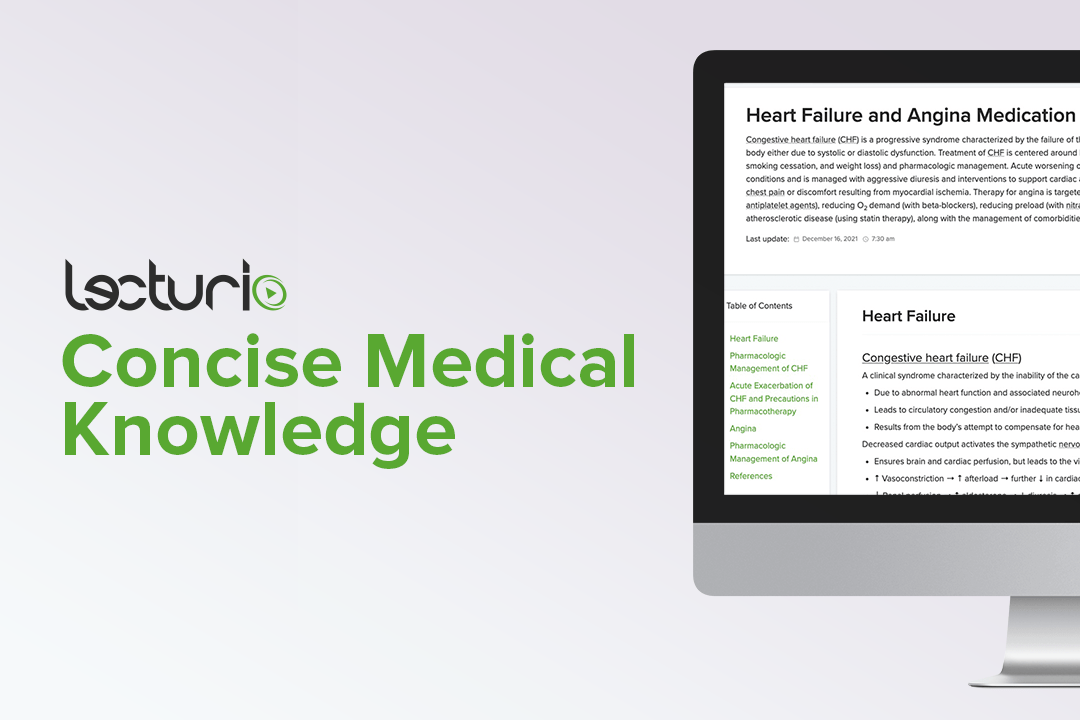Playlist
Show Playlist
Hide Playlist
Heart Failure: Diagnostics and Treatment
-
Slides Heart Failure.pdf
-
Reference List Pathology.pdf
-
Download Lecture Overview
00:00 How do we diagnose heart failure? So it's a clinical evaluation. There may be episodic or persistent weight gain due to fluid retention. Again, remember this is due to the renin angiotensin aldosterone system. If the kidneys don't get adequate perfusion, they think we need to increase blood volume. So the increased blood volume through those mechanisms into aldosterone, we increase the blood volume but there is no place for to go and the right heart is failing so now you get edema and you get water retention and that will give you weight gain. You will have hypotension. So, the heart is not pumping effectively and that could be either due to a primary left ventricular failure or right ventricular failure. There is dysfunction on an echocardiogram so we normally would expect the heart to squeeze vigorously and to have an ejection fraction of 60-70%. If on echocardiogram we're seeing 15, 20, 30% that's clearly a sign of heart failure. And then peripheral evidence of impairment of functional capacity. 01:09 So the kidneys don't work well, the liver doesn't work well, the brain doesn't work well. 01:14 Those are all manifestations of having insufficient perfusion of those important tissues. 01:21 On chest x-ray, the classic findings of left heart failure include increased fluid. 01:28 So, what is called cephalisation of vessels? Normally, you have a relative gradient from top to bottom of less prominent vasculature. Again, this has to do with gravity in the way that we take the chest x-ray with our patient standing upright up against the film. If you see greater and greater amounts of apparent vessels near the head, that indicates that you have increased retrograde pressure and volume going back up into the pulmonary vasculature. With that increased pressure and volume, you're going to see effusions especially at lines in between the fissures or at the base of the lungs. The Kerley B lines are just another manifestation of increased pulmonary edema. And typically in a heart failure at end stage, we do have an enlarged heart. 02:17 It is dilated. So, normally the cardiac silhouette should be half of the thorax diameter and here it's about 2/3 of the thorax diameter. So that's the increased cardiothoracic ratio. How do we treat this? Well, I'm not a treating clinician and you will get much much more in terms of experience dealing with heart failure because it's so common when you have your own patients but we're going to give diuretics. So we're going to try to frustrate the aldosterone system by getting rid of excess fluid. That's going to be helpful because that will allow us to not have the fluid overload that's going to have the secondary consequences. We can block that neurohumoral axis and we can block the effects of angiotensin by blocking the converting enzyme. Remember ACE, the angiotensin converting enzyme that takes angiotensin I, to angiotensin II. And a very potent form of antihypertension treatment that will help to reduce afterload and allow the heart to do better is ACE inhibitors. We can do beta-adrenergic blockers Alternatively, we can block the effect of angiotensin II by using angiotensin receptor blockers (or ARBs), or by additionally breaking down natriuretic peptides with a combination angiotensin receptor-neprilysin inhibitor (or ARNI). 03:45 An ARNI is actually preferred of these 3 options. 03:49 We can do beta-adrenergic blockers which will also affect the vasculature throughout the heart. 03:56 Other helpful medications include mineralocorticoid receptor antagonists, which block the effects of aldosterone, and sodium-glucose cotransporter 2 (or SGLT2) inhibitors, which increase osmotic diureses and natriuresis. 04:14 And finally we can, in end-stage heart disease, provide mechanical assist and these can be things from a left ventricular assist device to a total cardiac replacement with either an allograft, a transplant of the heart, or with a total artificial heart. And with that, we've gone a very long way around to look at heart failure involving left-sided heart failure, right-sided heart failure causes manifestations and some of the management.
About the Lecture
The lecture Heart Failure: Diagnostics and Treatment by Richard Mitchell, MD, PhD is from the course Heart Failure.
Included Quiz Questions
Which of the following is a characteristic finding on chest radiograph in a patient with decompensated heart failure?
- Cephalization of vessels
- Flattened diaphragms
- Decreased cardiothoracic ratio
- Air in the mediastinum
- Osteophyte formation
Which medication is used in the management of heart failure with reduced ejection fraction?
- Angiotensin-converting enzyme inhibitors
- Beta-2 adrenergic agonists
- Aspirin
- Calcium channel blockers
- CD20 inhibitors
What question helps evaluate decompensation in a patient with heart failure?
- What is your current weight, compared with your baseline weight?
- What did you eat for breakfast?
- When did your headache start?
- How many years have you smoked?
- Did you hit your head when you fell?
Customer reviews
5,0 of 5 stars
| 5 Stars |
|
1 |
| 4 Stars |
|
0 |
| 3 Stars |
|
0 |
| 2 Stars |
|
0 |
| 1 Star |
|
0 |
Thank you, Dr. Mitchell! It was a pleasure to study with you!




